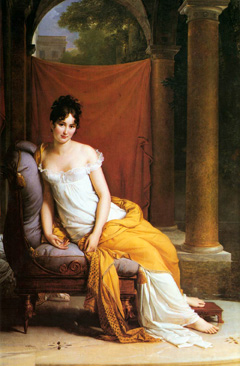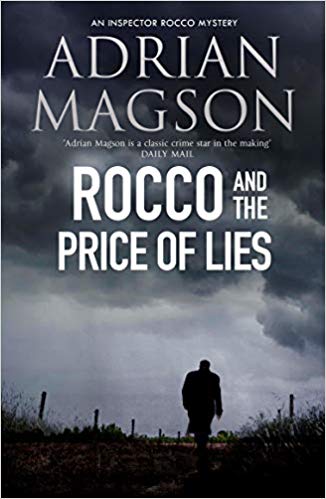In thinking about the storyline for ‘Rocco and the Price of Lies’ (Dome Press – April 2019), I had more or less decided on the kind of crimes involved (fraud, theft, blackmail, murder – pretty much your run-of-the-mill headliners in most countries and, in this case, France in the 1960s. Well, it wasn’t all love and peace, was it?) That should be enough to keep Rocco on his toes, I thought; a nice change from gangsters and gunfights, assassins and former Resistance fighters. But for crimes to be interesting to write about, they have to have something behind them… something on which to hang the real story.
It took me a while longer to settle on the catalyst for these wrong-doings; there has to be one, otherwise we’re talking about wildly random events all coming together by chance in one place. And I figured that was unlikely outside of your average modern-day television soap where anything and everything is possible and go hang the coincidence factor.
I decided that these crimes would mesh neatly with the possession of three paintings by the three different individuals (and victims). The three men, all senior figures in the French establishment – a judge, a senior politician and the director-general of France’s Sûreté Nationale (now the Police Nationale), each possesses a work of art by some of France’s leading 18th and 19th century portrait painters. Well, why not? The men were all influential and successful, supposedly well-educated and keen for everyone to know it. A way of displaying their success and high station in life was to show off something of value to their friends, families and those lower on the social pecking order. And since there weren’t fancy electronic home coffee-makers around at the time or 55” television sets on which to stream the latest Jacques Tati film from Netflix, I had to think of another kind of ego-booster.
What better than a nice, highly-visible painting hanging on the wall - and what appeared to be a high-value piece of art at that? Any one of them would surely be enough to blow off the socks of anyone fortunate enough to see them. The message carried is simple, if a little boastful (okay, a lot boastful): ‘I’m rich, I’m successful and I appreciate fine art and can afford it, so go suck on it, little people!’
However, showing off like this, (even if it tends to be a touch of smoke and mirrors) can incur a price in more than monetary terms, and risks attracting the wrong kind of attention. In real life, simply possessing a nice painting is not sufficient reason for their owners to be targets for blackmail, of course. But in ‘Rocco and the Price of Lies’, each of the three men in question is revealed to have had some career-smashing secrets and considerable egos. And the threatened exposure of one and the diminishment of the other is the stuff of which crime novels are often made.
The problem for Rocco is that secrets held by senior establishment figures rarely get the exposure they deserve, and it’s made very clear to him by the all-seeing Interior Ministry, that there should indeed be an investigation, for which he has been specially chosen. He’s an acclaimed policeman, it is explained, but from outside the Paris region and therefore the government can be seen to be hiding nothing. The fact that he is also ordered to conclude the matter quickly and without fuss or publicity, otherwise his selection for a top job will fail, comes as no surprise; it’s what he has come to expect of the suits in seats of power.

Madame O’Murphy – 1751 – by François Boucher

Madame Récamier – 1802 – by François Gérard

The Toilette of Esther – 1841 – by Théodore Chassériau
I won’t give anything away and spoil the story, but I did want to show the three central items featured in the book by name only, but which were definitely not part of my imagination. My reason for using real works of art was because when it came to the writing, I simply couldn’t make up three supposed paintings with enough oomph to convince myself that they fitted the story. (In the same way that I use real places on which to pin the action, even if I change the names to protect the innocent). The paintings had to be real for them to make sense from a value point of view, and real enough for the three men to claim possession of them… and for someone else to wonder how.
Besides, they are very fine works of art and deserve a bit of a showing.
PS: (I don’t, myself, possess any of these paintings; I’d have to rob places like the Louvre in Paris to do so, and I don’t fancy my chances. But in getting some details of painters and paintings, I did pick the brains of the late renowned artist and music-lover, Jeff Spedding (husband of suspense author, Sally Spedding). Jeff was quite happy to talk in terms that an art idiot like me could understand, and he was also great fun to know with a wicked sense of humour. I didn’t set out to make one of the characters in the book like him, but there were similarities that were too good to miss. I’m sure he wouldn’t mind).
‘Rocco and the Price of Lies’- (The Dome Press). The 6th in the Inspector Lucas Rocco series.

Amazon: https://geni.us/vCJzXXk
Adrian Magson - https://www.adrianmagson.com